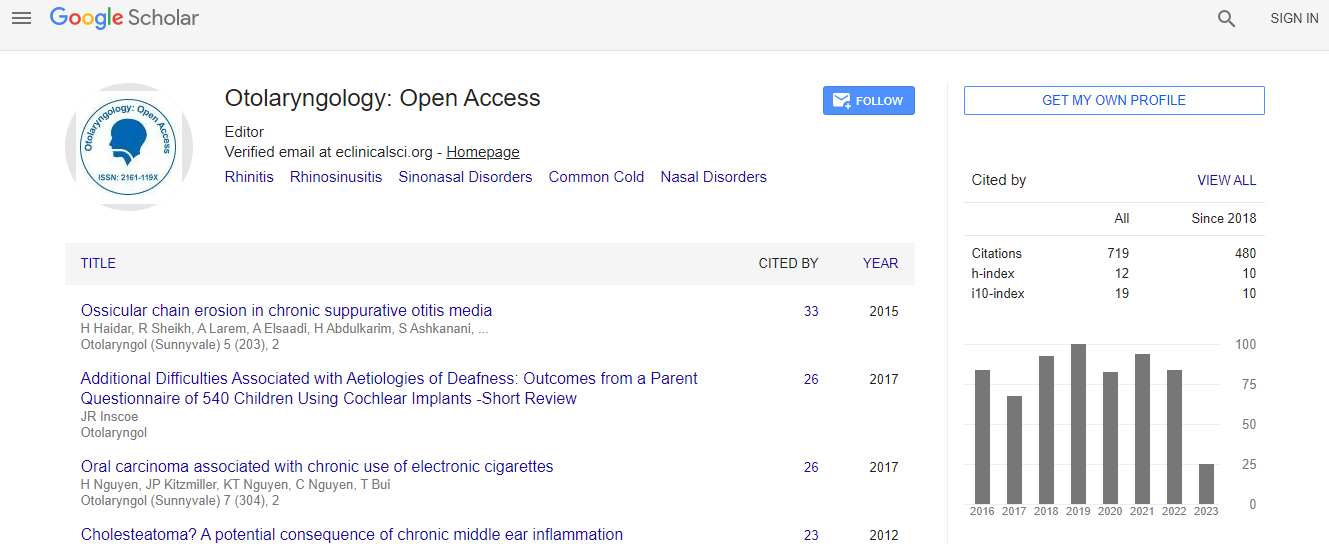Obstructive Sleep Apnea: Comparative Analysis of Surgical and Non-Surgical Treatment Modalities
*Corresponding Author:Received Date: Dec 30, 2024 / Published Date: Jan 30, 2025
Citation: Tsung-Lin Y (2025) Obstructive Sleep Apnea: Comparative Analysis of Surgical and Non-Surgical Treatment Modalities. Otolaryngol (Sunnyvale) 15: 617DOI: 10.4172/2161-119X.1000617
Copyright: © 2025 Tsung-Lin Y. This is an open-access article distributed under the terms of the Creative Commons Attribution License, which permits unrestricted use, distribution, and reproduction in any medium, provided the original author and source are credited.
Abstract
Obstructive sleep apnea (OSA) is a prevalent sleep disorder characterized by repetitive episodes of upper airway obstruction, leading to disrupted sleep and decreased oxygen saturation. The management of OSA involves both surgical and non-surgical treatment modalities. Non-surgical approaches, including Continuous Positive Airway Pressure (CPAP), oral appliances, and lifestyle modifications, are the first-line treatments. Surgical interventions, such as uvulopalatopharyngoplasty (UPPP), maxillomandibular advancement (MMA), and hypoglossal nerve stimulation, are considered in cases of severe OSA or non-compliance with conservative therapies. This paper provides a comparative analysis of these treatment modalities in terms of efficacy, patient compliance, risks, and long-term outcomes.

 Spanish
Spanish  Chinese
Chinese  Russian
Russian  German
German  French
French  Japanese
Japanese  Portuguese
Portuguese  Hindi
Hindi 
